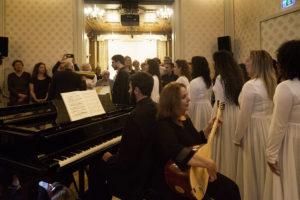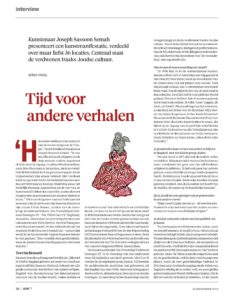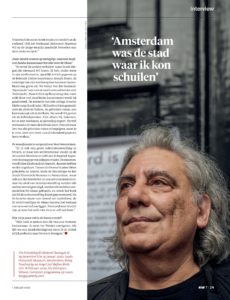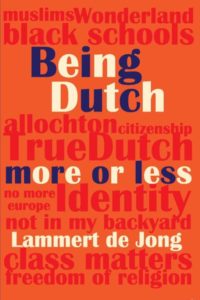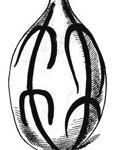Art Manifestation ‘On Friendship/(Collateral Damage) III – The Third GaLUT: Baghdad, Jerusalem, Amsterdam’ ~ The Guest Becomes Host
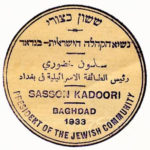 Joseph Sassoon Semah shares his lost rich Jewish Babylonian cultural heritage through art, performances and debates. He asks the public to review their own art, culture, traditions and identity.
Joseph Sassoon Semah shares his lost rich Jewish Babylonian cultural heritage through art, performances and debates. He asks the public to review their own art, culture, traditions and identity.
The manifestation takes place mainly in 36 different public locations in Amsterdam, from September 7th 2019 – January 19th 2020.
Nederlandstalig: http://rozenbergquarterly.com/gast-wordt-gastheer/
Stichting Metropool Internationale Kunstprojecten
Curator: Linda Bouws.
On Friendship/(Collateral Damage) III – The Third GaLUT: Baghdad, Jerusalem, Amsterdam is an aesthetic and poetic research into the cities Baghdad, Jerusalem and Amsterdam, which has been conceived by artist Joseph Sassoon Semah and curated by Linda Bouws (Metropool International Art Projects). All these cities are said to have been tolerant at some time in their history, but how does that relate to ‘otherness’ and what does it mean today? The project focuses on two lines of thought. The first is what Semah called ‘The Third GaLUT’, the third Exile, a metaphor for disconnectedness.
The second is ‘The Guest’, he who is allowed to live and work in a foreign context tests his surroundings the very moment he articulates his particular position in exile without any reservations.
The Guest becomes Host. By this process Semah investigates one of the greatest achievements of human civilisation: hospitality. Joseph Sassoon Semah translates his cultural and visual heritage and its subtext into contemporary art. While doing so he reassesses and redefines lost heritages.
The project will translate the cultural heritage of Baghdad, Jerusalem, and Amsterdam, with the help of the different ‘Guests’, into a meaningful experience for a broad audience.
In On Friendship/(Collateral Damage) III – The Third GaLUT: Baghdad, Jerusalem, Amsterdam, Joseph Sassoon Semah shares his lost rich Jewish Babylonian cultural heritage and asks the public to review their own art, culture, traditions and identity. This will take place mainly in 36 public locations
in Amsterdam.
There will be new pieces of art, performances, debates, lectures, round-table discussions, video-interviews, a publication in English, articles on diverse platforms, a research – and a video-report.
Simultaneously in Amsterdam, Baghdad and Jerusalem a small house will be built: MaKOM in MaKOM. The project will translate the cultural heritage of Baghdad, Jerusalem and Amsterdam, with the help of different ‘Guests’, into a meaningful experience for a broad audience.
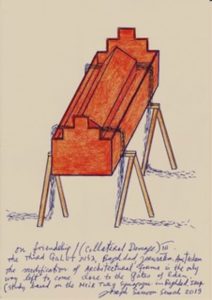 Artist Joseph Sassoon Semah
Artist Joseph Sassoon Semah
Artist Joseph Sassoon Semah was born in Baghdad (Iraq, 1948), as one of the last of a Babylonian Jewish family lineage, the grandson of Chief Rabbi Hacham Sassoon Kadoori (1885-1971). Kadoori was the head of the Babylonian Jewish community and preached of peace between Judaism, Islam and Christianity. Baghdad once was one of the most diverse an tolerant cities in the world. The Babylonian Jews in Iraq were one of the oldest and historically seen, the most important Jewish community. The Talmud Bavli was compiled in Babylon and during the British mandate in the 1920s, the well-educated Jews played an important role in public life. But from 1948, the year of independence for Israel, life for Jews in Iraq becomes extremely difficult.
Between 1950-1952, 120.000 – 130.000 Iraqi Jews were transported to Israel. The displaced Baghdadi Jews were forced to leave behind their culture and possessions in Iraq. Semah, together with his parents was displaced to the State of Israel in 1950. His grandfather Hacham Sassoon Kadoori refused to leave Iraq and stayed in Bagdhad until his death. His experiences in the Six Day War (1967) and the Yom Kippur War (1973) resulted in Joseph Sassoon Semah deciding to leave Israel: in this context he calls this a self-imposed exile.
As a Babylonian Jew who emigrated to the West (Amsterdam), he is part of GaLUT (Exile), an endless cycle of diaspora and return. You long for your country of birth and search for a way to relate to your cultural heritage and traditions. Heritage reminds us of our history.
On Friendship/(Collateral Damage) III – The Third GaLUT: Baghdad, Jerusalem, Amsterdam
For this project Joseph Sassoon Semah designs a new series of drawings and scale-sized architectural models of houses, cultural institutions, synagogues and Jewish burial places in Baghdad from before 1948, that refer to their rich history.
At all 36 locations there will be an architectural art-model on show for at least a month, and activities will be organised with the partners.
On Friendship/(Collateral Damage) III – The Third GaLUT: Baghdad, Jerusalem, Amsterdam was realised in part with the support of AFK, BPD Cultuurfonds, Lumen Travo Gallery, Mondriaan Fonds and Redstone Natuursteen & Projecten.
Please mark the following data in your calendar and keep an eye out for our next newsletters or stay up-to-date at http://rozenbergquarterly.com/category/meritis_makom/ and www.josephsemah.nl
On Friendship/(Collateral Damage) III – The Third GaLUT: Baghdad, Jerusalem, Amsterdam will take place in 36 places:
1. Location: Lumen Travo Gallery, Lijnbaansgracht 314, Amsterdam
Date: 7 September – 26 October 2019
Exhibition, performance and meetings, opening 7 September, 17.00 hrs.
On Saturday 7 September at 5 pm: opening of On Friendship / (Collateral Damage) III – The Third GaLUT: Baghdad, Jerusalem, Amsterdam.
Performance: Joseph Sassoon Semah, Baruch Abraham, Peter Baren, Zuhal Gezik, Jom Semah.
Exhibition: drawings from the new series ‘Between Graveyard and Museum’s sphere’, paintings, sculptures and a model cast in bronze of the Meir Tweig Synagogue of Hacham (Chief Rabbi) Sassoon Kadoori, who was also president of the Babylonian community in Iraq.
He lived from 1885-1971. Artist Joseph Sassoon Semah is his grandson. The model, key work of the project, will later be exhibited at other locations.
Lumen Travo Gallery, the gallery of Joseph Sassoon Semah, is the home of the entire event.
A space is also available as an information and research place and ad hoc lectures and meetings are organized for a small audience.
2. Location: Advocatenkantoor Bynkershoek, Herengracht 310, Amsterdam
Date: 24 September – 6 October 2019
Art and private meeting 24 September, 18.00 hrs.
3. Location: Goethe-Institut Amsterdam, Herengracht 470, Amsterdam
Date: 12 September – 12 October 2019
Lecture & Performance, 12 September, 20.00 hrs.
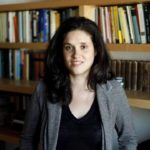 Lecture: dr. Yael Almog, Goethe Universität Frankfurt
Lecture: dr. Yael Almog, Goethe Universität Frankfurt
The lecture will engage with the presentation of the East in the works of the great German poet Johann Wolfgang von Goethe particularly in his major work on Eastern aesthetics, the West-Östlicher Divan. In his Divan, Goethe portrays the possibility of cultural exchange through art between the East and the West. What was the meaning of this vision in Goethe’s time? How can we understand the West-östlicher Divan in light of contemporary polemics on migrants and refugees? The Israeli migration to Western Europe will be taken as a unique case study with which to examine the contemporary validity of Goethe’s vision.
Performance:
Joseph Sassoon Semah, Baruch Abraham, Levent Aslan and Zuhal Gezik – Aslan Muziekschool with 6 students, Dali Heymann, Uzi Heymann, Atousa Bandeh, Peter Baren, Mikko Fritze, Jom Semah, Yvonne Strang and Els Wijnen.
Kunstmanifestatie On Friendship/(Collateral Damage) III – The Third GaLUT: Baghdad, Jerusalem, Amsterdam ~ Gast wordt Gastheer
 Kunstmanifestatie in Amsterdam door stichting Metropool Internationale Kunstprojecten
Kunstmanifestatie in Amsterdam door stichting Metropool Internationale Kunstprojecten
Joseph Sassoon Semah deelt zijn verloren gegane culturele erfenis door middel van beeldende kunst, performances, debatten en lezingen. De manifestatie vindt plaats op 36 verschillende locaties in Amsterdam, van 7 september 2019 tot en met 19 januari 2020.
Stichting Metropool Internationale Kunstprojecten
Curator: Linda Bouws.
The Introduction in English: http://rozenbergquarterly.com/the-guest-becomes-host/
On Friendship/(Collateral Damage) III – The Third GaLUT: Baghdad, Jerusalem, Amsterdam is een poëtische en kritische zoektocht van kunstenaar Joseph Sassoon Semah naar de steden Amsterdam, Bagdad en Jerusalem. Deze steden waren van oudsher gastvrije en tolerante toevluchtsoorden. Zijn ze dat vandaag nog? Wat is de plek voor ‘De Gast’, degene die in een vreemde context leeft en werkt en zijn omgeving toetst op het moment dat hij zijn specifieke positie als ’Gast’ in ballingschap zonder enig voorbehoud toont en zijn plaats opeist? De Gast wordt Gastheer. Deze bijzondere kunstmanifestatie gaat over twee onlosmakelijke grootheden: de dynamiek van de derde ballingschap en de evolutie van Gast naar Gastheer.
Joseph Sassoon Semah ontwerpt voor de manifestatie 36 architecturale modellen op schaalgrootte van huizen, culturele instituties, synagogen, joodse begraafplaatsen in Bagdad van voor 1948, die refereren aan de rijke geschiedenis van zijn verloren gegane joodse Babylonische cultuur, en een nieuwe serie tekeningen. Hij vraagt het publiek opnieuw te kijken naar zijn eigen kunst, cultuur, tradities en identiteit.
De manifestatie vindt plaats op 36 zeer diverse locaties van musea tot fietswinkel, van theaters tot hotel, van schaakwinkel tot garage. Op alle plekken verschijnt zijn kunst en worden met de partners activiteiten georganiseerd (artistieke interventies, performances, lezingen, en debatten). Daarnaast bouwen wij een huis in Amsterdam (Hermitage Amsterdam), in Bagdad (voor de synagoge Meir Tweig) en in Jeruzalem (Jerusalem Biënnale): MaKOM in MaKOM.
On Friendship/(Collateral Damage) III – The Third GaLUT: Baghdad, Jerusalem, Amsterdam’ is mede tot stand gekomen met steun van AFK, BPD Cultuurfonds, Lumen Travo Gallery, het Mondriaan Fonds en Redstone Natuursteen & Projecten.
 Over de kunstenaar Joseph Sassoon Semah
Over de kunstenaar Joseph Sassoon Semah
Joseph Sassoon Semah is geboren in Bagdad (Irak, 1948) als één van de laatsten van de Babylonische joodse familielijn, de kleinzoon van Hacham (chief-rabbi) Sassoon Kadoori (1885-1971). Kadoori was de president van de Babylonische gemeenschap en predikte vrede tussen het jodendom, de islam en christendom. Bagdad was een van de meest diverse plaatsen ter wereld. Vanaf 1948, het jaar van de onafhankelijkheid van Israël, hebben de Iraakse joden het echter zwaar. Tussen 1950-1952 werden 120.000 -130.000 van de joodse gemeenschap van Irak naar Israël getransporteerd. De ontheemde Bagdadi-joden werden gedwongen hun cultuur en bezit in het Midden-Oosten te verlaten. Samen met zijn ouders werd Joseph Sassoon Semah in 1950 ‘verplaatst’ naar de staat Israël. Zijn grootvader Hachem Sassoon Kadoori weigerde Irak te verlaten en bleef tot zijn dood in Bagdad. Ervaringen in de Zesdaagse Oorlog (1967) en de Yom Kippur Oorlog (1973) deden Joseph Sassoon Semah besluiten Israël te verlaten: in deze context spreekt hij van een ‘zelfopgelegde ballingschap’.
Als Babylonische jood die is geëmigreerd naar het Westen (Amsterdam) is hij onderdeel van GaLUT (Exile), een eindeloze cyclus van diaspora en terugkeer. Je blijft altijd verlangen naar je geboorteland en zoekt een manier om je te verhouden tot je culturele erfenis en tradities. In Irak zelf is geen enkele herinnering meer aan de eens zo machtige joodse Babylonische gemeenschap. De Babylonische cultuur is driemaal vernietigd: in Irak, in Israël, maar ook in Europa speelt ze nauwelijks nog een rol. Alhoewel er geen joden meer leven in Irak en de Babylonische cultuur lang is ondergeschoven in Irak, Israël en in Europa, kan hun cultuur niet langer worden genegeerd. Een terugkeer naar de cultuur en identiteit die ze in Irak, Israël en Europa hebben verloren.
Joseph Sassoon Semah spreekt van ‘architectuur in ballingschap’.
In On Friendship/(Collateral Damage) III – The Third GaLUT: Baghdad, Jerusalem, Amsterdam onderzoekt Joseph Sassoon Semah hoe verloren gegane culturele erfenis weer betekenis kan krijgen. Hij vertaalt zijn verloren gegane, rijke joodse Babylonische culturele erfgoed in beeldende kunst en performances. Terwijl hij dat doet revalueert en herdefinieert hij dit erfgoed samen met anderen. Zijn gasten.
Activiteiten en Locaties: On Friendship/(Collateral Damage) III – The Third GaLUT: Baghdad, Jerusalem, Amsterdam Kunstmanifestatie van 7 september 2019 t/m 19 januari 2020
Op elke locatie verschijnt voor een maand een ander architecturaal model en een selectie uit de serie nieuwe tekeningen.
Locaties: Joods Historisch Museum – Nieuwe Amstelstraat 1 Amsterdam – en Redstone Natuursteen & Projecten – Benit 18 Amsterdam
Datum: 20 december 2019 t/m 19 januari 2020)
In het Joods Historisch Museum en bij Redstone Natuursteen & Projecten worden gelijktijdig twee identieke kunstwerken opgesteld. De vorm van de objecten is gebaseerd op de herinnering die kunstenaar Joseph Sassoon Semah heeft aan de ingang van een publieke schuilkelder in Tel Aviv.
Tussen de twee objecten in (tussen de Publieke en Private Ruimte) heeft hij een onzichtbaar Zwart Vierkant bestemd – een onzichtbaar gebied – een gemoedstoestand – een ruimtelijke plaats – een zekere leegte – een herinnering aan מקלט עיר IER MiKLaT & Het Toevluchtsoord / Schuilkelder &
Performance & bijeenkomst: 16 januari, aanvang 14.00 uur
In het kader van de manifestatie vindt op 16 januari 2020 vanaf 14 uur een gesprek plaats, voorafgegaan door een performance.
Performance: Joseph Sassoon Semah met 22 participanten: o.a. Emile Schrijver, Baruch Abraham, Jom Semah, Peter Baren, Uzi Heymann, Bulent Evren, Mudar Adas, Yvonne Strangen, Zuhal Gezik en Renée Hartog.
Gesprek: Emile Schrijvers (algemeen directer JCK), Arie Hartog (directeur Gerhard-Marcks Haus, Bremen) en Joseph Sassoon Semah over de urgentie van diversiteit in het jodendom en de noodzaak van heroriëntatie van culturele erfenis in musea.
Voor nadere informatie en aanmeldingen verwijzen wij u naar www.jck.nl.
Zie voor info tentoonstelling in het Joods Historisch Museum: https://jck.nl/nl/tentoonstelling/friendshipcollateral-damage-iii-third-galut-baghdad-jerusalem-amsterdam
Op 36 locaties in Amsterdam zijn unieke architecturale modellen van huizen, synagogen, culturele instituties, joodse begraafplaatsen in Bagdad van voor 1948 geplaatst, die refereren aan de geschiedenis van Joseph Sassoon Semahs verloren gegane rijke joodse Babylonische cultuur. In december en januari zijn op de volgende locaties de modellen op schaalgrootte te bezichtigen.
Achsa Vissel ~ Tijd voor andere verhalen
NIW 27 november 2019
The Dutch Black School: They Are Not Us
Lammert de Jong – Being Dutch. More or less. In a comparative Perspective of USA and Caribbean Practices Rozenberg Publishers 2010. ISBN 978 90 3610 210 0 – The complete book will be online soon.
‘An Inconvenient Truth’
In the Netherlands, ‘black’ is not black; it is ‘non-western’, including Moroccan, Turkish, and people of Caribbean origin, lumped together as allochtons. In government statistics, schools with more than 70% allochton pupils are generally classified as a black school; schools with less than 20% allochton pupils are graded as white. The black school concept is also used in relation to the surrounding neighborhood. Schools with more pupils of non-western origin than expected in view of the composition of the neighborhood are labeled blacker or, in the case of an over-representation of white pupils, whiter. A deviation of 20% or more between neighborhood and school population classifies a school as too white or too black (Forum, 2007). The number of primary schools with more than 70% allochton pupils is increasing; in Dutch nomenclature: the schools are becoming blacker.
The Dutch black school is a perfidious contraption that locks in children of non-western origin, while its black label flags an underlying apartheid syndrome to underscore for the True Dutch – intentionally or not – how different these allochtons are. Yet the black school touches an open nerve in the Netherlands, a sensitive reality that surpasses its statistical definition. On the one hand the black school reeks of apartheid, which the Dutch so bravely contest when occurring elsewhere in the world. On the other hand the True Dutch are well aware that their entitlement and unencumbered access to white schools is at stake when school segregation is tackled in earnest. So far Dutch counteraction is limited to research and some experimental desegregation projects.
The Dutch black school is embedded in the particular Dutch school system that funds public-secular as well as private-denominational schools. Once, the Dutch school system was driven by the accommodation of different beliefs. On the strength of their belief – church-religion or secular ideology – parents wanted a school for their children that adhered to the values, doctrines, and rules of their faith, and paid for by the state. [Note: In 2009 the Netherlands’ Council of State pointed out that publicly financed orthodox religion-based schools may refuse teachers who identify with a particular gay life style. The fact that a teacher is gay is not sufficient to deny a position, but if he or she is in a same sex relation and married in church or city hall, that may suffice, as such contravenes the orthodox rule that marriage is a holy sacrament between one man and one woman]
Denominational and non-religious schools emphasized particularity, a distinctiveness that corresponded with religious doctrines or ideological orientations. The principle of Freedom of Education (Onderwijsvrijheid) is enshrined in the Netherlands Constitution, art. 23. Over the years parents have come to believe that they are entitled to choose a specific school for their children, which is a travesty of the freedom to choose a particular type of school, based on denominational or secular definition.
Dutch politics wavers when coming to grips with the effects the black school brings – quite literally – home. Most parents don’t set out intending to discriminate, which makes a noble difference, and legally enforced segregation is not on the books. Nonetheless a segregated white-black educational system has become a reality, with most True Dutch children in better schools and having better school careers, and children of allochtons at the other end. And that with long lasting effects after the school years have come to an end. This type of school segregation stigmatizes New Dutch children for life, while reinforcing an allochton footprint that will divide the nation for years to come. Although most political parties assert that integration is the major social issue of our time, they fail to confront the black school with a sense of urgency. Dutch politics still has to acknowledge that the black school emblematizes the allochton population in the Netherlands with an explicit signature: They are not Us.
Black schools are a common feature in most major Dutch cities. So far the black school does not stand out in Dutch politics as a problem that must be solved urgently by law, regulation or in the courts. The black school seems more of an inconvenient truth than a critical social or political issue. To an outsider this must be surprising, given that the Netherlands is known for its rock-solid liberal reputation. How come then that the Netherlands has become a segregated nation? And do they discriminate against people of color? Do the Dutch not know how to handle the ethnic complexities of today’s multi-cultural society? Or is it a lack of compassion for those who do not belong to the white Dutch tribe: Discrimination or not, my children first. Or is it merely a matter of social-economic stratification, a distinction between advantaged and disadvantaged children, so that the Dutch black school is just a myth (Vink, 2010)?
“Trump Specializes In Showmanship Not Statecraft”: An Interview With Andrew Bacevich
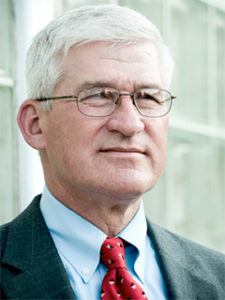
Andrew J. Bacevich. Professor Emeritus of International Relations and History. Photo: Boston University
What are the founding principles of U.S. foreign policy? Was the U.S. ever isolationist as mainstream diplomatic history claims? And what about Donald Trump’s foreign policy? Is he a normal foreign policy president? Is he in favor of U.S. global expansion? Is China emerging as the new global empire? Andrew Bacevich, Professor Emeritus of International Relations and History at Boston University and now president of the Quincy Institute for Responsible Statecraft tackles the above questions in the interview below. A retired US army Colonel who fought in the Vietnam War an lost a son in the Iraq war, Bacevich is the author of numerous works on U.S. foreign policy, including among many others, Washington Rules: America’s Path to Permanent War (2010); The New American Militarism: How Americans Are Seduced by War (2005); Breach of Trust: How Americans Failed Their Soldiers and Their Country (2013; and of the forthcoming book The Age of Illusions: How America Squandered Its Cold War Victory.
C. J. Polychroniou: I would like to start by asking you to reflect on the founding principles of U.S. foreign policy, which many regard as “geopolitical isolationism” and “unilateralism,” and whether this is what the U.S. has practiced for most of its history.
Andrew Bacevich: The overarching theme of U.S. policy from the very founding of the Republic has been 1780s opportunistic expansionism. As far back as the 1780s, the Northwest Ordinances had made it clear that the United States had no intention of confining its reach to the territory encompassed within the boundaries of the original thirteen states. While the U.S. encountered sporadic resistance during the course of its remarkable ascent, virtually all of it proved to be futile. With the notable exception of the failed attempt to incorporate Canada into the Union during the War of 1812, expansionist efforts succeeded spectacularly and at a remarkably modest cost. Already by mid-century, the United States stretched from sea to shining sea.
In 1899, the naturalist-historian-politician-sometime soldier and future president Theodore Roosevelt neatly summarized the events of the century just drawing to a close: “Of course, our whole national history has been one of expansion.” When TR uttered this rarely acknowledged truth, a fresh round of expansionism was underway, this time reaching beyond the fastness of North America into the surrounding seas and oceans. Among Europeans, a profit motivated but racially justified imperialism was in full flower. The United States was now joining in. The year before, U.S. forces had invaded and occupied Cuba, Puerto Rico, Hawaii, Guam, and the island of Luzon across the Pacific. Within two years, the United States had annexed the entire Philippine Archipelago. Within four years, with Roosevelt now in the White House, U.S. troops arrived to garrison the Isthmus of Panama where the United States, subsequent to considerable chicanery, was setting out to build a canal. Soon thereafter, to preempt any threats to that canal, successive administrations embarked upon a series of interventions throughout the Caribbean. Roosevelt, William Howard Taft, and Woodrow Wilson had no desire to annex Nicaragua, Haiti, and the Dominican Republic, they merely wanted the United States to control what happened in those small countries, as it already did in nearby Cuba. While President Trump’s recent bid to purchase Greenland from Denmark may have has failed, Wilson – perhaps demonstrating greater
skill in the art of the deal – did persuade the Danes in 1917 to part with the Virgin Islands for the bargain price of $25 million.
The U.S. preference for operating unilaterally and its determination to avoid getting entangled in European power politics during this period is of much
less significance than narrative of expansion, as Americans persistently sought more — more territory, more markets, more abundance. Read more
